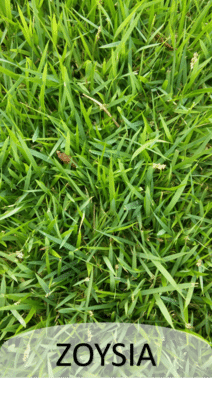The Truth About Zoysia Grass
Originally from Southeast Asia, zoysia grass is able to grow in the sandy soils of Southwest Florida.
Frequent, close mowing produces the finest results in zoysia. In shaded areas, it should be mowed at slightly higher levels. Clipping removal will also help prevent thatch accumulation. 
Zoysia is considered drought tolerant (see below). The leaf blades of zoysia grass will roll under during drought conditions so it tends to conserve moisture more effectively than other species. However, it stops growing and begins to discolor during extended dry periods.
White grubs are the major insect attacking zoysia grass. Annual grub prevention is highly recommended to maintain the health of this grass type. Brown patch, rust and leaf spot diseases can cause problems but the grass usually recovers with proper fungicide treatments.
We Do Not Recommend Zoysia Grass For Residential Lawns
| Drought | Zoysia is advertised as being more drought tolerant than St. Augustine grass. This may be true, but only in the sense that a drought which would kill St. Augustine, only causes Zoysia to brown out and go dormant. It doesn’t necessarily kill the roots. What they don’t tell you is that a drought-damaged areas of St. Augustine will soon fill in with runners when regular watering is re-established, but Zoysia, being slow-growing, may take as long as 2 years to recover from drought damage. |
| Watering | Zoysia thrives in the sod fields because it receives daily watering during the growing phase. After 30 days in a residential setting, county restrictions limit watering to twice (and in some areas only once) per week. In our experience, Zoysia requires just as much, if not more frequent watering than St. Augustine. |
| Mowing | The fact that Zoysia is slow-growing is also used as a selling point. This may lead you to believe that less frequent mowing is needed. Actually, Zoysia should be mowed very short – like a putting green – with a reel mower. Failure to keep it short just increases the likelihood fungus will begin. |
| Fungus | Zoysia is very susceptible to fungus problems in addition to insect issues. Once fungus begins in the lawn, it is very difficult to eradicate. |
